This page features all the current exhibition and project news. See the talks and workshops pages for information on those forthcoming events. Find new publications, magazine articles, interviews, TV coverage and podcasts here and new books and catalogues here. For past exhibitions see here or visit the specific project page in the main portfolio or biography information.
INVISIBLES: La vie cachée des microbes at the Musee De La Main in Lausanne

“Ex Voto”, “Fragile Microbiome”, “Microbe Mouth”, “Super-organism: The Living Microbiome”, “Fermenting Futures”, and “The BioArchaeology of Yeast” is now on show as part of “INVISIBLES. La vie cachée des microbes” at the Musee De La Main in Lausanne, Switzerland.
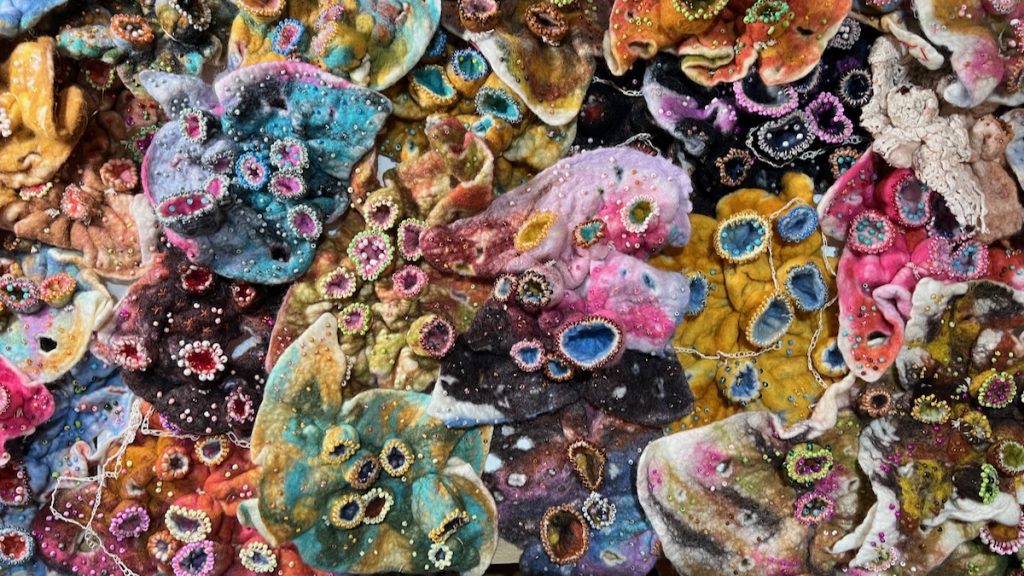
The exhibition explores a fascinating and little-known world, that of the microorganisms that surround us. Omnipresent, but invisible, microbes form communities essential to the functioning of all ecosystems on our planet. From soils to oceans, including air, plants and even the human body: the exhibition invites you to discover this vast unknown land which will not fail to surprise you. The exhibition opened on 26th June 2024 and continues until 4th January 2026

Biomaterials AR Chandelier created through the EU S+T+ARTS Programme Better Factory Programme
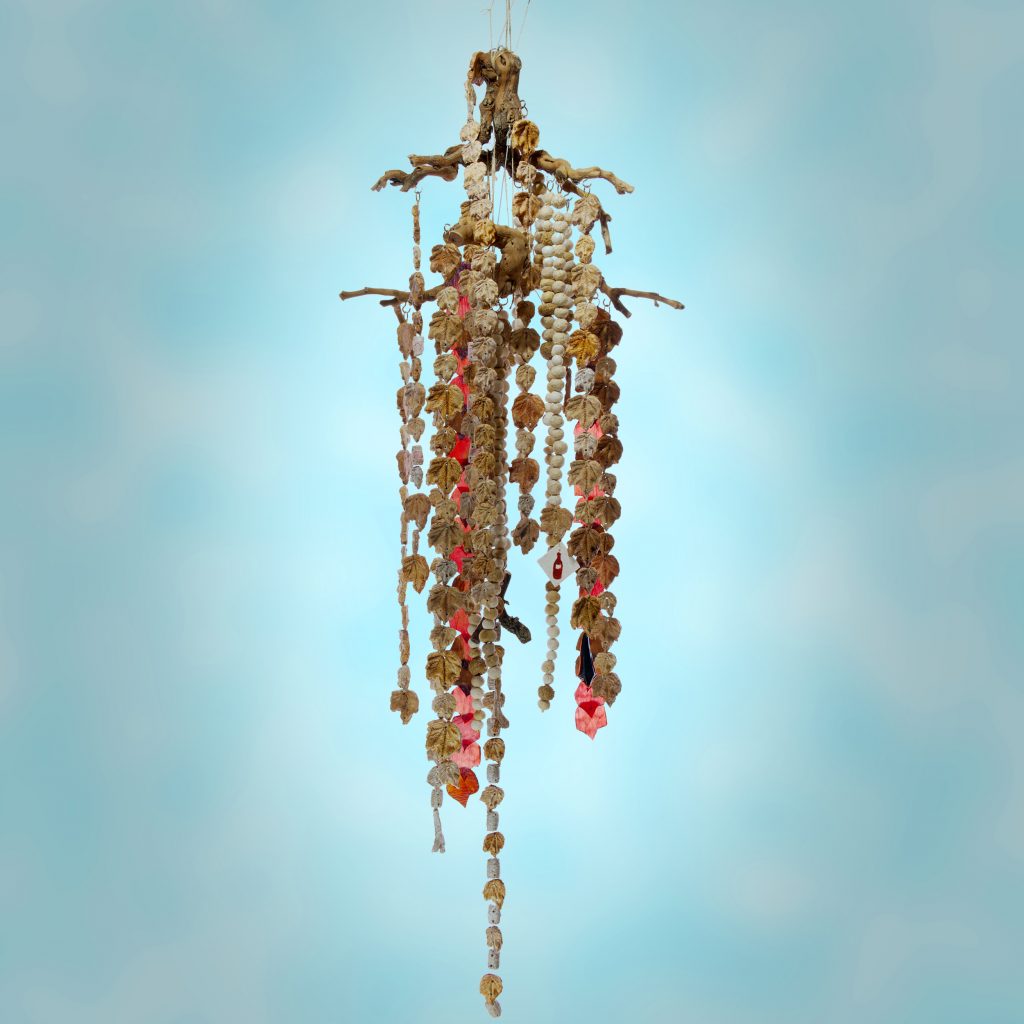
Anna Dumitriu has developed a new body of artworks that explore how biomaterials and augmented reality can impact sustainability and the circular economy in the wine industry with the EU S+T+ARTS Better Factory programme. Her spectacular Biomaterials AR Chandelier (2024) is an intricate hand-made chandelier installation made using wine waste, specifically biotextiles made using spoilt wine and feccia (final grape pressing) kombucha SCOBY (symbiotic cultures of yeast and bacteria), and bio-plastics and bio-composites from wine waste (grape marc and vine clippings) – all from scratch. The biomaterials have been cast into forms inspired by photogrammetry scans from the winery of project partners Marco Felluga (Italy), and recipes released open source. The chandelier triggers a generative augmented reality app #artandwineAR that gives every user a unique experience. It is accompanied by a sonification of fermentation data produced from IoT Smart Corks created by collaborating technology company BUBAMARA-V from Serbia. See more here.
Download the app for Apple iOS devices here
Download the app for Android devices here

The opening ceremony of the project with the artist will take place at Russiz Superiore Winery in Italy on 25th July 2024 at 6:30pm. More details here.
Biotechnology from the Blue Flower in Gene Cultures at MIT Museum, Cambridge (USA)
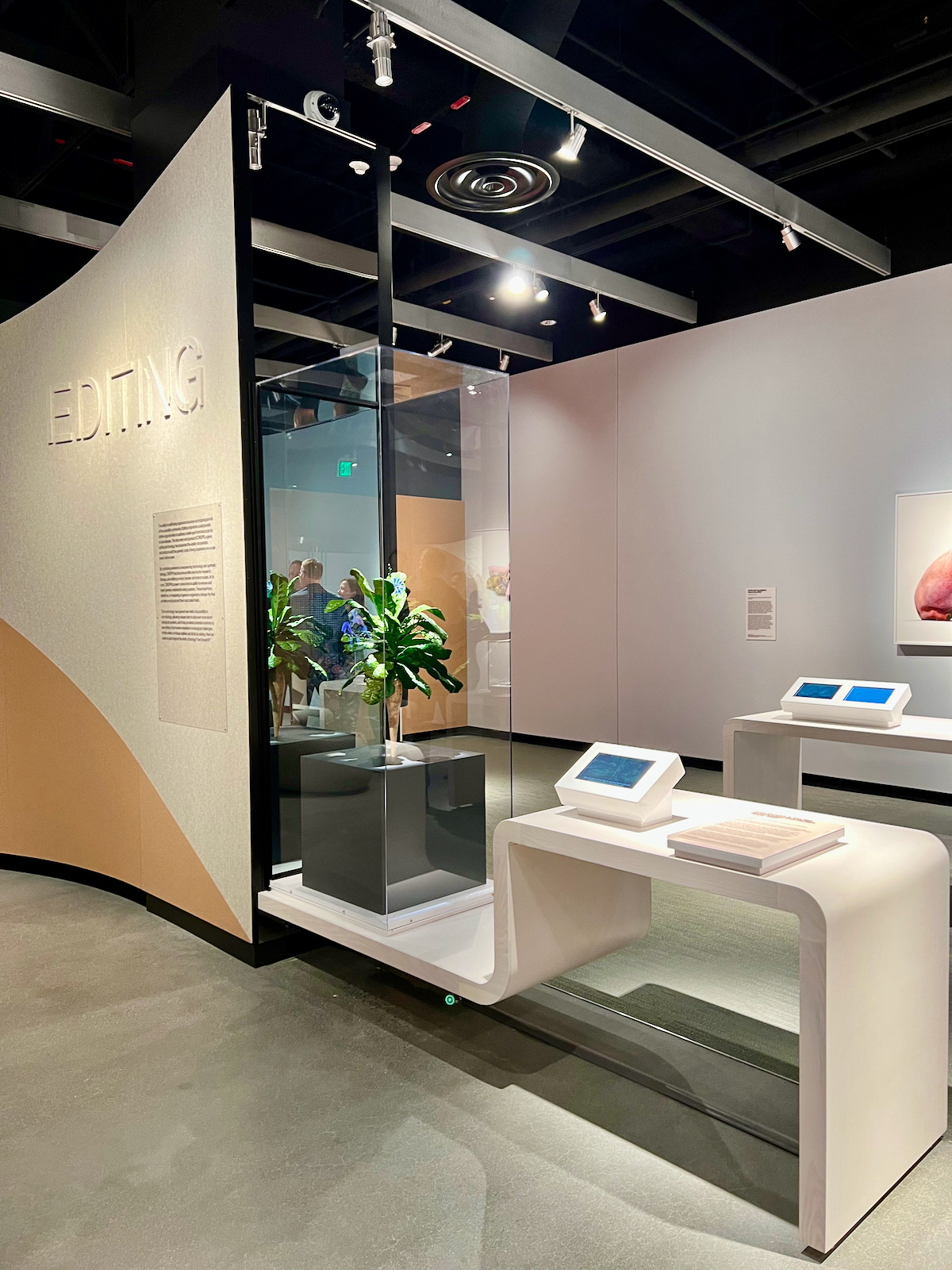
Biotechnology from the Blue Flower is now on show in a major exhibition “Gene Cultures” at the MIT Museum in Cambridge, Massachusetts, USA which opened to the public on 2nd October 2022 and continues until later in 2024. “Biotechnology from the Blue Flower” explores the cultural history and morphology of the chicory plant and investigates how new plant breeding methods such as CRISPR gene editing can be used to create future healthcare and food benefits. Chicory inspired the idea of the Blue Flower in German Romanticism, and became a central symbol of the movement. It inspired Goethe’s concept of the ‘urpflanze’ or original plant in his “Metamorphosis of Plants”. The romantic movement was a reaction to the industrial revolution and held nature and emotion in the highest esteem. Now we are part of a biotechnological revolution, and again the blue flower becomes an important symbol. This time in a more complex position at the interface of nature and technology, central to societal explorations of what may be acceptable in synthetic biology, and how ‘nature’ and ‘natural’ may be defined in the future. The 3D printed sculpture is based on high resolution photogrammetry scans of a chicory plant known as ‘clone 37’, and it contains actual traces of CRISPR modified protoplasts and leaves, which the artists created in the lab. The whole genome sequence of the plant is projected behind, with all the repeating DNA sequences have been removed, returning it to Goethe’s concept of the ‘original plant’. Created by Anna Dumitriu and Alex May through an artists’ residency with the EU CHIC Project.
Biotechnology from the Blue Flower Augmented Reality App
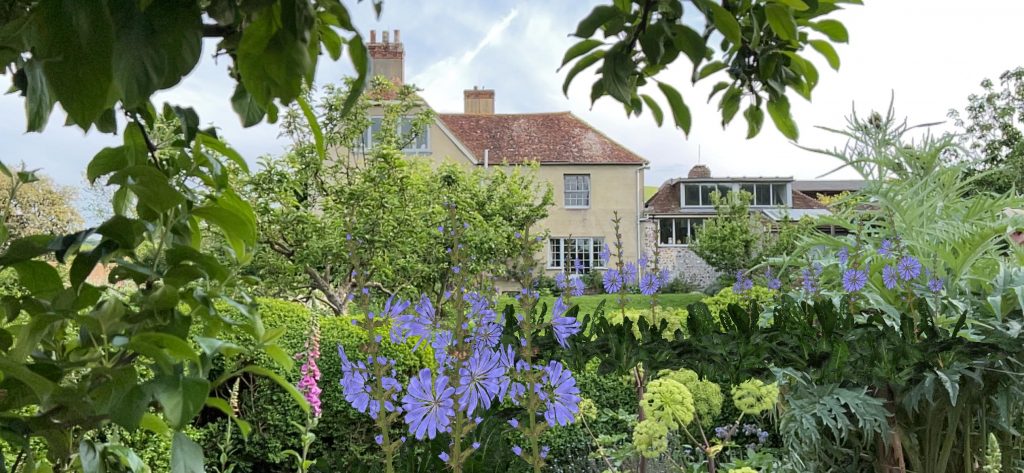
“Blue Flower” a standalone Augmented Reality (AR) app is now available for iPhone/iPad/Android devices http://onelink.to/blueflower. The gene edited plants represented here are not normally allowed to leave the laboratory in many countries but through augmented reality users can transgress the rules, fill the world with them, and take and share photos. The app also accompanies the sculptural installation in exhibitions enabling audiences to playfully interact with the work.
Mysteries and Mycotoxins British Mycological Society Massee Arts Award Project with University of Cranfield now on show at the Wellcome Sanger Institute in Cambridge, UK

Anna Dumitriu was awarded a 2023 Massee Arts Grant from the British Mycological Society to work with Dr Carol Verheecke-Vaessen and the Applied Mycology Group at Cranfield University. Together they developed and created an innovative new body of sculptural artworks that explore issues around mycotoxins and raise awareness of their significant impact on human and animal health, as well as on the food industry. The project entitled “‘Mysteries and Mycotoxins” an artistic exploration of mycotoxins” was inspired by the relationship of mycotoxins to the Ancient Greek Eleusian Mysteries and the Salem Witch trials as well as modern health inequality and cutting edge science. Outcomes were be showcased as part of UK Fungus Day 2023. The project was also exhibited at the as part of “BioArt Knowledge” a solo exhibition by Anna Dumitriu in Oundle, UK.
“Mysteries and Mycotoxins” is currently on show at the Wellcome Sanger Institute in Cambridge, UK, and will be presented in a artist’s talk at All Things Fungi Festival 2024. The collaboration with Carol Verheecke-Vaessen is now continuing beyond the initial funding of the Massee award to further highlight the impact of climate change on mycotoxin risk.
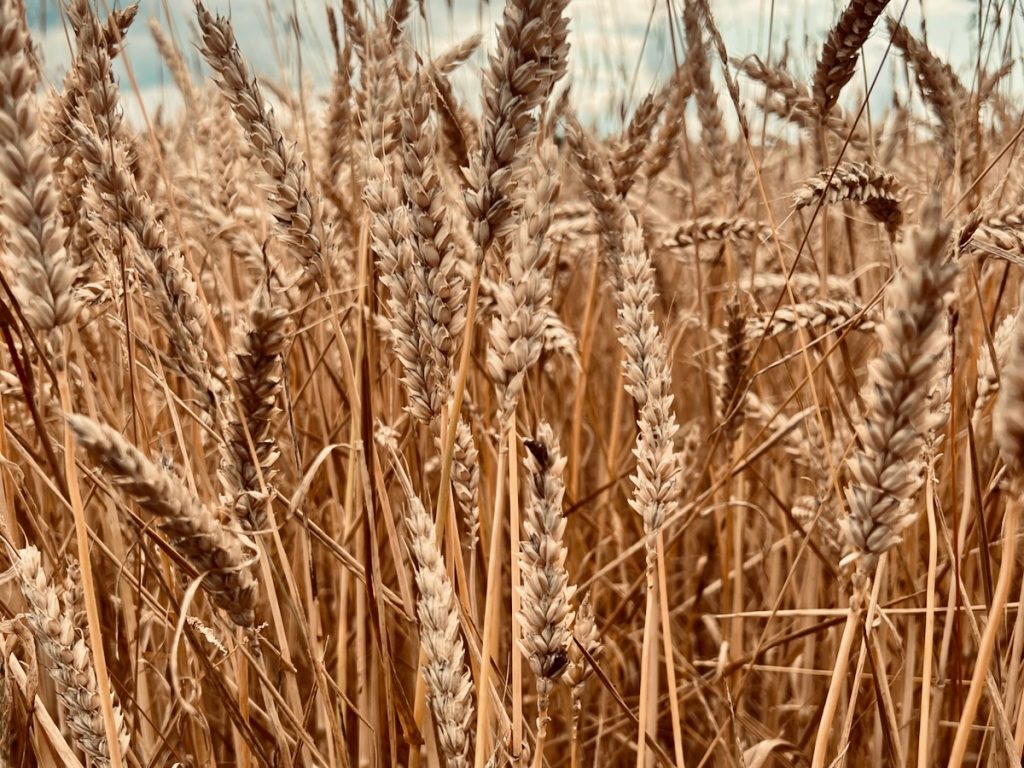
The Mutability of Memories and Fates with The Institute of Epigenetics and Stem Cells in München
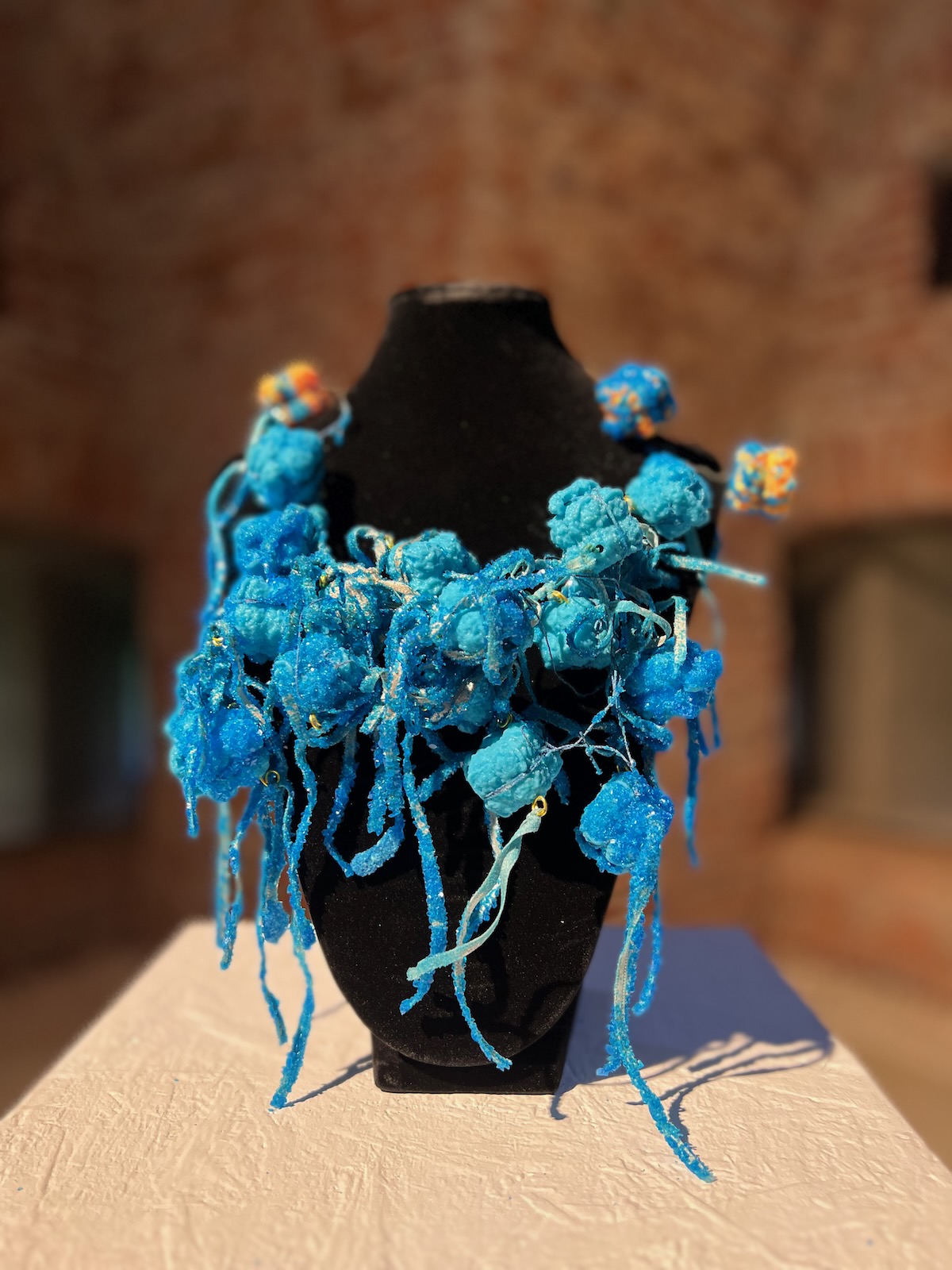
Anna Dumitriu became the first artist in residence with the Institute of Epigenetics and Stem Cells at Helmholtz Zentrum in München, Germany in 2020. Her project “The Mutability of Memories and Fates” responds to the concept of cellular memory and cell fates, and explores how the cell packages DNA and what impact that has. It focuses on the mutability of the cell, or what controls its constancy, and how this affects gene expression and the nature of life. The project is curated by Dr Claudia Schnugg. Multiple physical residency periods on site in München between 2021 and 2023 followed a year long virtual residency. A work-in-progress showcase exhibition took place at the Deutsches Museum for the 60th anniversary of the Helmholtz Zentrum. The project then received follow on funding in 2022. Works from the series have been exhibited as part of BioArt Revolution/ Revoluția BioArt in Timisoara, Romania and “BioArt Knowledge” at the Yarrow Gallery in Oundle, UK, and presented as a lecture as part of the “Encounters in Art and Biology” Symposium at LMU, Munich, Germany.
A new solo exhibition will bring together of all the works from the “The Mutability of Memories and Fates” series for the first time at Alte Schmiede, Pernerinsel, Hallein, Austria from 5th – 9th September 2024. There will be an accompanying artists talk on 3rd September 2024, a panel discussion and exhibition opening on 5th September 2024 as well as an additional events programme to be announced.
New Project Exploring Epigenetics, War and Sanctuary
This new project takes the form of an urgent artistic research exploration of the epigenetic impact of violence, conflict and famine with a focus on intergenerational trauma, and the sanctuary of pleasure brought by sweet foods or hot sweet tea as a form of comfort during times of conflict.
The team comprising Anna Dumitriu, and Professor of War and Society, Rachel Kerr, and curator Cécile Bourne-Farrell from Kings College London are inspired by research into what is known as the Dutch Hunger Winter cohort. The Dutch Hunger Winter was a famine brought about by the Nazi’s who blocked food supplies in the Netherlands in 1944 as a punishment for railway workers strikes aimed at preventing the movement of Nazi troops. It has been shown that the children of women pregnant during the famine have higher levels of obesity and diabetes, and a have a higher mortality rate. It has been shown that certain genes have been silenced in these children’s DNA potentially affecting their metabolisms. How many children being born now in Ukraine or Gaza will be damaged in this way?
Professor Maria Elena Torres-Padilla, Head of the Institute of Epigenetics and Stem Cells at the Helmholtz Zentrum in Munich, Germany is the project’s scientific advisor, and this work builds on learning from their “Mutability of Memories and Fates” project.
The project received seed funding from Kings College London’s Sanctuary Season.
New Collaboration Exploring the Uses of AI in Infection Prevention and Control

Anna Dumitriu and Alex May have started a new collaboration with Dr James Price, Dr Sid Mookerjee and Dr Ashleigh Myall (NEXQ) to artistically explore novel new research which offers to improve infection prevention and control (IPC) in hospital settings using artificial intelligence. In the first stages of the project the artists are exploring how the AI infection prevention system works by applying it to a historic data set based on John Snow’s research on the 1854 Cholera outbreak in Broad Street, London, considered to be the first epidemiological study ever conducted. The artists are in the process of fabricating a far more detailed data set using AI tools, and simulations that bring the outbreak to life and will show us if modern AI could have helped stop the outbreak sooner, or even prevented it from ever happening. Other elements of the project explore how to engage audiences in understanding the meaning and implications of healthcare associated infection (HCAI).
Supported by Brighton and Sussex Medical School and University of Sussex Higher Education Innovation Funds (HEIF), supporting a wider program of work in Sussex on translational clinical research in IPC through collaborations with academia, clinical, industry and patients/public.
Invisible You: The Human Microbiome as part of Invisible Worlds at Eden Project
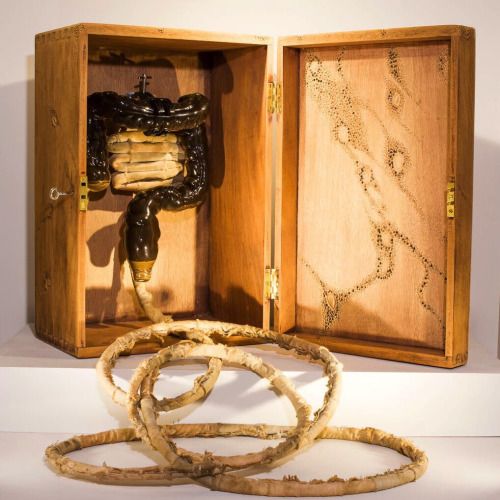
The flagship exhibition Invisible You: The Human Microbiome is part of Invisible Worlds initiative at Eden Project in Cornwall, UK. Invisible Worlds is an ongoing major permanent exhibition that reveals the world beyond our senses introducing the interconnectedness between life and the Earth’s environments. The exhibition features Don’t Try This At Home (in collaboration with Dr Jane Freeman and Dr Caroline Chilton) and Super-organism: The Living Microbiome.
